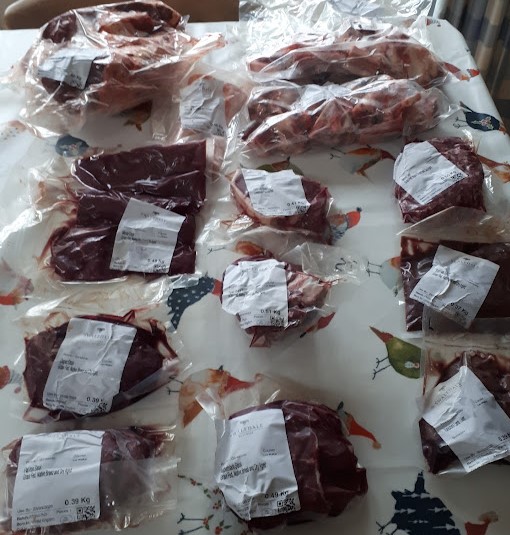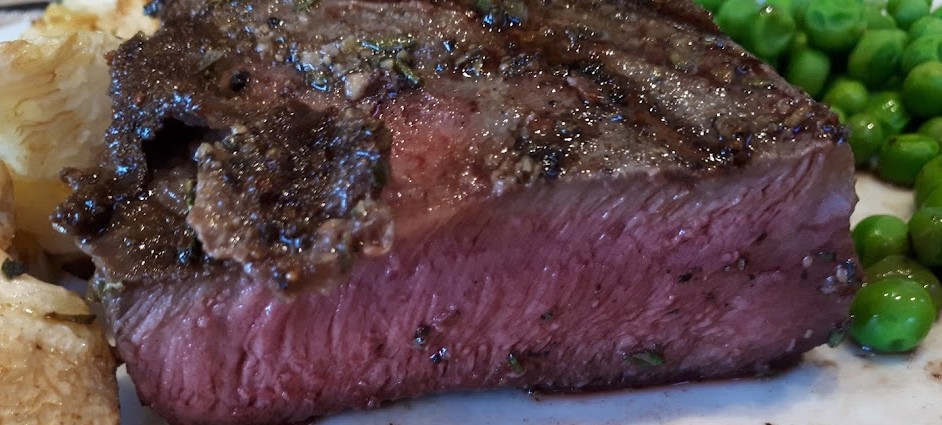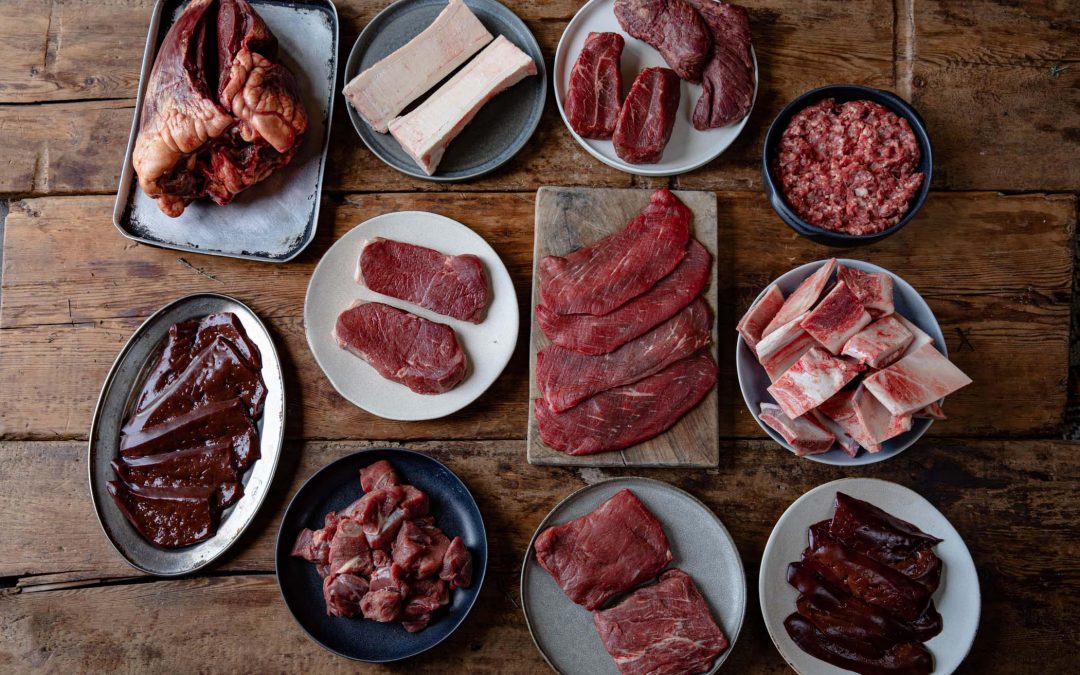Because I blog about diet and health I occasionally get approached to endorse a product – a supplement, diet regime or miracle cure of some sort. I always say no because for many modern health problems the best way to maintain or return to health is to give our body what it needs, what it’s designed to work with. So that’s basically real food, daylight, walking and sleep, which all help with stress reduction. And because with practice these are all things someone can do themselves, it puts them back in the driving seat of their own health. This is empowering and powerful.
But I broke my non-promotion rule when an enterprising online butcher from Yorkshire, Swaledale Butchers, asked if I’d try their Nutritionists Meat Box. As a business it makes sense to try to turn a profit from the by-products of your main offering – the less popular cuts and the offal in this case. But cleverly they teamed up with a nutrition therapist to explain the extra nutritional benefits of these cuts which have gone out of fashion. When UK food inflation is at 19%, it makes sense to try products which are lower cost but still nutrient-dense. More nutrition for your buck.
All the meat is from Yorkshire, grass-fed and grass-finished, which keeps the nutrient content high and is kinder to the animal. Using local farmers also keeps food miles down – just as important for the animal is it is for ecology. All this means it’s top notch stuff, more nutrient-dense and ecologically-sound than much run of the mill supermarket meat. In our house we’re lucky and grateful that we can go for quality over quantity when it comes to animal products and this meat box ticked all the right boxes on that front.
Here’s what the box contained:
- 2 x feather blade steaks
- 2 x lamb leg steaks
- 2 x onglets (aka’ hanger’ steaks)
- 2 x flat iron steaks
- 4 x minute steaks
- 2 x marrow bone canoes
- 540g minced beef
- 500g diced beef shin
- 350g beef liver
- 350g lamb’s liver
- 2kg beef bones
- 1 ox heart (1.5kg).
So, plenty of offal and cuts which have fallen out of fashion plus a few more familiar products. I’m sure that a

It arrived fresh (not frozen) packed in minimal-plastic cool packaging and full instructions are on their website. Instructions? Well, some of it is straightforward, individually-packaged and labelled and can be put straight into the freezer. But the liver and heart needed a bit of work. We haven’t used the marrow bone canoes yet, but here’s how we got on with everything else.
Liver Liver doesn’t freeze well – it goes grainy but it’s fine if you turn it into pate before freezing. We ate the lambs liver that night and made pate from the stronger beef liver and froze it. Liver is probably the most nutrient-dense food there is so it’s good to know I’m topped up. It contains large amounts of bioavailable vitamin A though, so pregnant women should avoid it.
Ox heart The ox heart was huge and was a two-hour project to prepare. I wanted more info than Swaledale gave me but online most of the instructions I found were for smaller sheep hearts so I did have to use my imagination a bit. My sister’s dogs got some great snacks that day because there’s some wastage at the ‘tube and valve’ end of things. As a bonus there’s some hard fat on it which I trimmed off and rendered in the oven and stored in the fridge. I’ve used it for frying meat which gives extra flavour. I minced some heart and added it to regular beef mince (will do this again) and cut the rest into steaks and froze it. We’ve used it like stewing beef in a stew – it was delicious, quite gamey, although tough, even after being cooked slowly for a long time. There is still loads left.
Steaks Well, I am now a convert to some of the more unusual steaks, fried in the normal way. They were all fabulous but the flat iron was utterly gorgeous, as was the onglet (aka hanger steak) and the lamb leg steaks were divine. The feather blades need longer cooking so they went whole into a braise for a longish slow cook in the oven.

Beef bones I have tried making beef broth before and apart from anything else, they stunk the house out. So beef broth is not for me but I’ve kept the bones in the freezer and have been adding them to stews and other dishes to add flavour and nutrients. They come chopped in small chunks so are easy to handle. No chopping.
Beef shin and mince Both great quality and tasty. Shin is a favourite – beautifully fall-apart tender with gentle braising.
The verdict?
Meat is more expensive than pulses and pasta, it’s true, but the principles of nose-to-tail eating, low wastage and honouring the animal are important to me so I like the idea of this meat box making the most of the parts of the animal that need a bit of a public relations boost. With high quality meat, a little goes a long way so it doesn’t have to break the bank, even these days. Am I enthusiastic about ox heart? Not really, but it certainly won’t be wasted and on its own it could probably feed a family of four for a week.
You need some time for prep on the day the box arrives (ideas are on the website for what to eat sooner, how long things will keep in the fridge etc), but most of it can go straight into the freezer. You definitely need a freezer for this.
which provides nutrient-dense meat at great value for money. Useful
The box retails at £85 and contained at least 50 generous meals which comes out at £1.70 per serving. With not much adjustment, this could be stretched further. Sometimes, particularly in a cost of living crisis, the idea of meat as a garnish or accompaniment rather than being the main event is useful. These costings are a rough estimate and don’t include the extra nutrition that comes from chucking beef bones into anything that gets cooked the oven. Considering the quality and provenance of the meat, that’s not bad value, and means a single box could last at least a month for two people with some meat every day.
My father said ox heart used to be a regular meal when he was young, and I certainly remember eating tongue as a child in the sixties. Didn’t think anything of it. Food tastes and fashions have changed so much since then. But when times are tough, food is expensive and health is deteriorating, maybe the old ways are worth revisiting?

